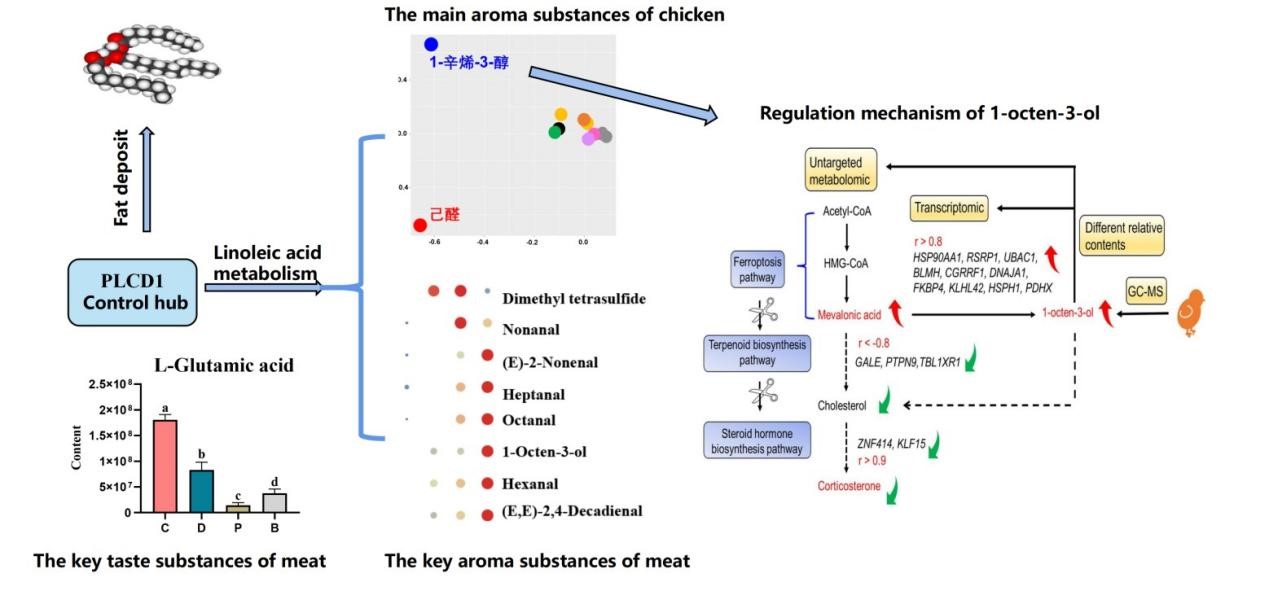
The Chicken Genetic Breeding Innovation Team of the Institute of Animal Sciences of CAAS focused on the improvement of chicken flavor in the broiler industry, and made important progress in the identification of key flavor substances, metabolic markers of chicken and the analysis of molecular mechanism. They provided a theoretical basis and important reference for the production of high-quality broilers in China. Relevant research results have been published in Food Chemistry (2021), Food Research International (2022), LWT-Food Science and Technology (2023), Journal of Integrative Agriculture (2023) and Foods (2023).
Jie Wen, the team's senior chief researcher, and Guiping Zhao, the team's top researcher, believe that one of the most crucial metrics for assessing chicken quality is its flavor. The flavor quality of chicken has, however, declined as a result of the long-term selection and breeding of broiler growth rate, which influences consumer purchase intent. With the improvement of people's quality of life, the "return to original flavor" of chicken meat has become an important demand of consumers. However, the key flavor substances and their metabolic mechanism of chicken are still unclear.
In response to the above problems, the research team conducted a comparative analysis of flavor substances of several livestock breeds of meat and multiple breeds of chicken meat. It was found that (E)-2-nonenal, (E,E)-2,4-decadienal, hexanal, 1-octen-3-ol, heptanal, octanal, nonanal and dimethyl tetrasulfide were the common key aroma substances in meat; hexanal and 1-octen-3-ol were the main aroma substances in Chinese local high-quality chicken; inosinic acid, L-glutamic acid, L-aspartic acid, creatinine and hypoxanthine were the important taste contributors in meat. Multi-omics analysis revealed that arachidonic acid and diacylglycerol (16:0/16:0/0:0) were common metabolic markers of chicken alkenals; 1-octen-3-ol was significantly correlated with mevalonic acid, a key substance for cholesterol synthesis, and mevalonic acid content was regulated by HSP90AA1, PTPN9 and other genes, leading to an increase in 1-octen-3-ol content and a decrease in corticosterone in chicken meat; PLCD1gene can improve the flavor quality of chicken by regulating the metabolism of linoleic acid, and was a candidate hub gene that determines the conversion of fatty acids into volatile substances or into fat deposition.
By Cui Huanxian (cuihuanxian78@126.com)

The original link: https://pubmed.ncbi.nlm.nih.gov/33951611/

